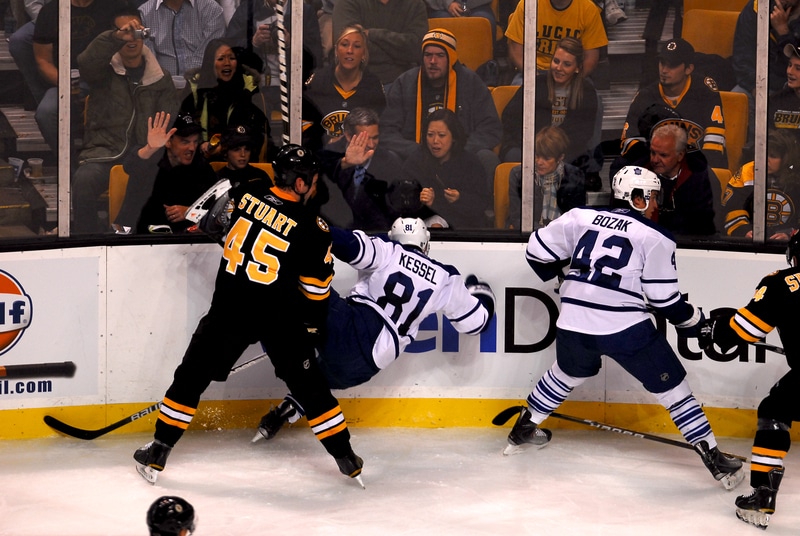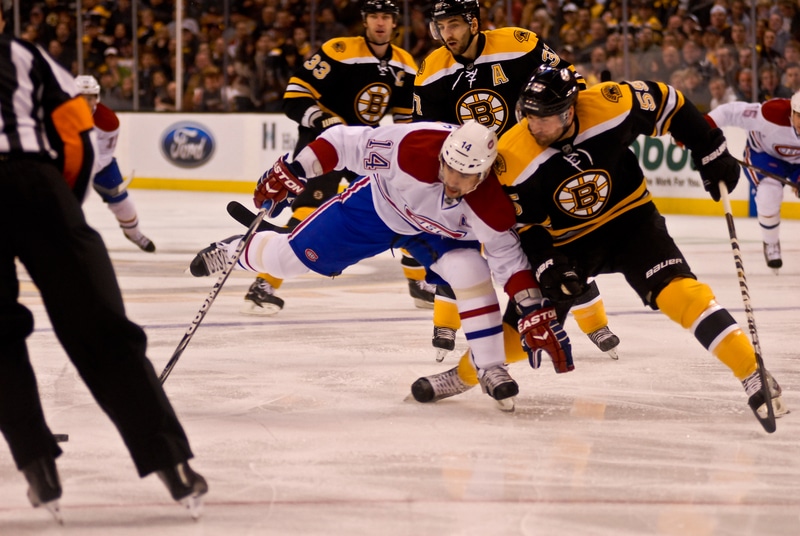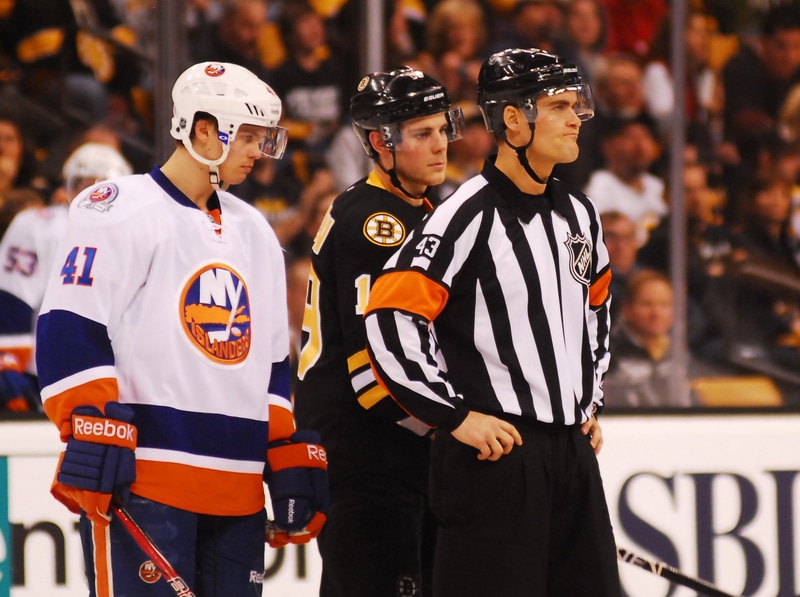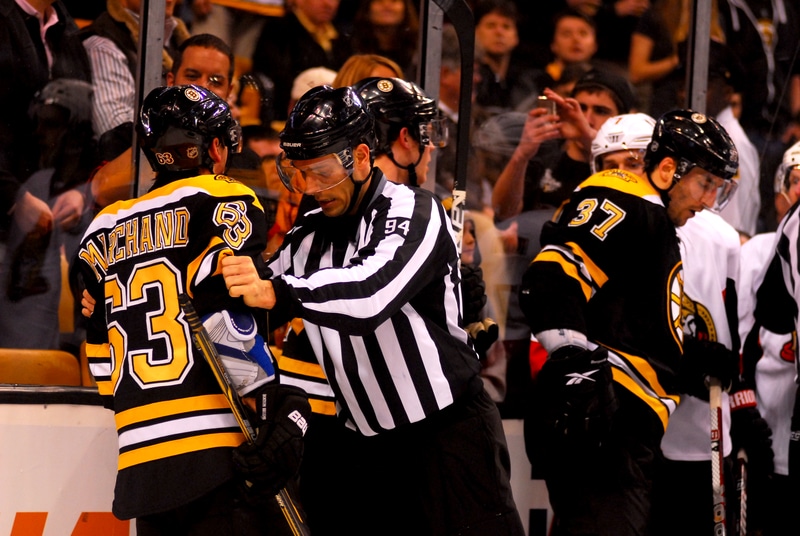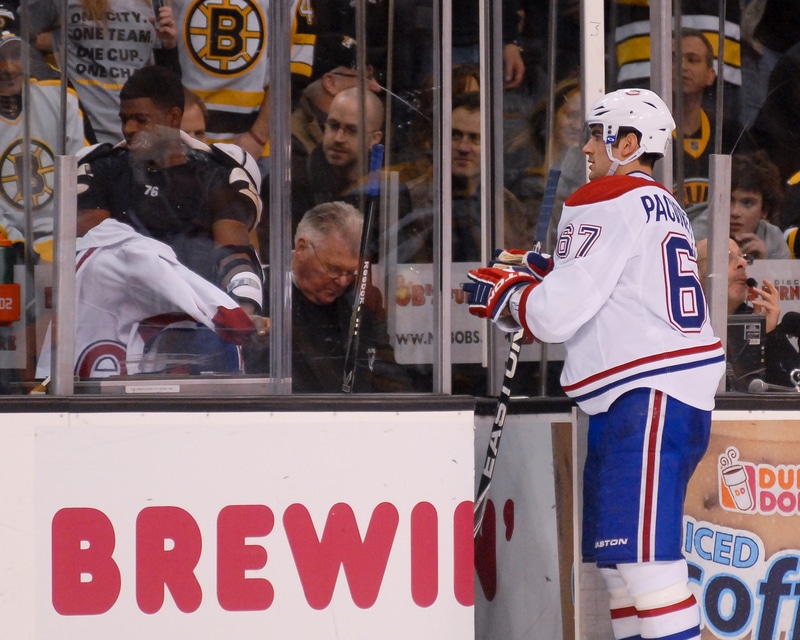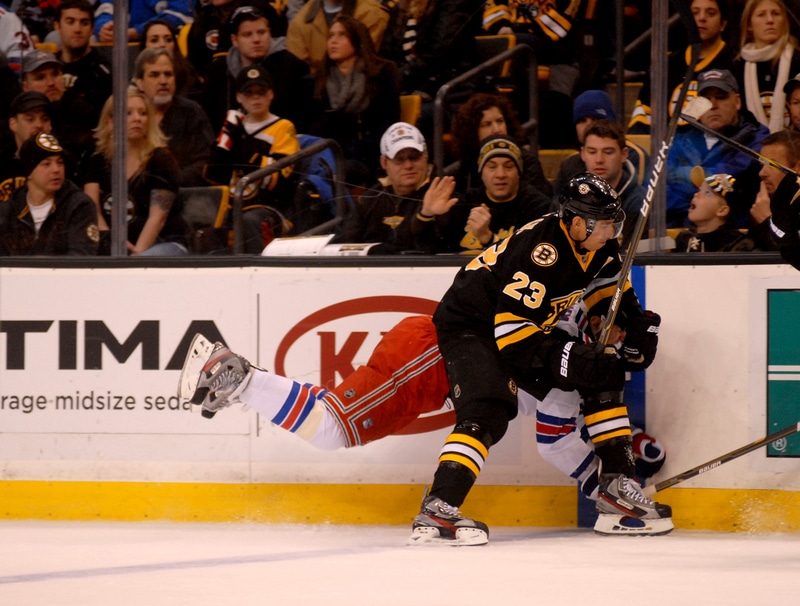Last updated on November 3rd, 2023 at 03:46 pm
Boarding in ice hockey occurs when a defenseless player is hit from behind into the boards via contact. A referee can issue a minor, major, or match penalty during a game against the player who initiates that collision. The referee makes this call based on how severe the impact was against a player. Since boarding hits can be dangerous to players via injuries, referees make sure that these hits result in a penalty to discourage that behavior during games.
Ice hockey boarding happens whenever a player is tripped, hit by a body check, or pushed into the boards during a game. Boarding often results in a player going face-first into the boards via the impact from another player. When a player is boarded, they are usually in a vulnerable position, like trying to push the puck out of the boards and not ready for hard impact.
What is the Difference Between Checking and Boarding in Hockey?
The main difference between checking and boarding comes down to the awareness of all players involved with the contact. For checking, players can have legal contact against one another as they go after the puck. Meanwhile, boarding occurs when one player is unaware of the impact, which can lead to a serious injury since they cannot brace for contact as they crash into the board.
A clean check, for example, can occur where one player’s shoulder makes contact with the other player’s shoulder or chest as they go after the puck on the ice. If you hit them for the check, the offending player must have or be going towards the puck. When a clean hit occurs, there is never a penalty. It is part of the game via a defender trying to get the puck from an offensive player.
Meanwhile, a boarding penalty occurs against a player who is defenseless against the board. The concept of boarding is to hit or push the opposing player onto the board to either knock them off their feet or rattle them enough, so they are out of position for a bit. Also, charging is similar to boarding, but the main difference is that charging means three or more strides a player takes to hit a defenseless player into the boards.
How Often Do Boarding Calls Occur During NHL Games?
According to a post on Reddit taking the NHL data from 2010-2021, boarding penalties occur slightly over 2% of the time during games. To put that number into perspective, other penalties like a delay of game with the puck going over the ice, too many men on the ice, and misconduct penalties tend to occur as often as boarding. However, while 2% of the time might seem rare, there are plenty more penalties in hockey that occur less than 1% during this same period.
Also, charging penalties, similar to boarding, are far rarer than a boarding call. Charging penalties from this source put that at less than a .5% point.
What is the Difference Between a Minor, Major, and Match Boarding Penalty?
The referee can call a minor, major, or match boarding penalty when boarding occurs during a hockey game. A minor boarding penalty tends to be light contact that puts a player into the board. If the referee deems that the boarding was not on purpose, they can issue a minor penalty, which means two minutes in the penalty box for that player.
A major penalty can occur if the referee deems that there was intent in the boarding hit to another player. If the referee considers the boarding hit a major penalty, the player receives a five-minute penalty in the penalty box.
Finally, a match boarding penalty can occur if there is an injury against a player from that hit. When this happens, the player who made the impact is removed immediately from a game, and the team needs to put a substitute player into the penalty box for five minutes. From there, the league will review the hit and can take additional discipline against the player who got the match boarding penalty.
How Do Referees Signal a Boarding Penalty?
Referees signal a boarding penalty by throwing their hand down with a fist into the palm of their other hand. There is typically an immediate stoppage of play after a boarding call occurs because a player is injured or a fight breaks out. If neither of these happens (which is very rare), the play will continue until the next stoppage of play. After that, the player with the boarding call goes to the penalty box.
Why is Boarding a Penalty in Hockey?
While checking is a legal part of hocking, boarding is not. Boarding increases the injury risk since one of the players is defenseless and unable to brace for a collision with the board. Some injuries from boarding include bruises, broken arms, or even head injuries, which is why there is a penalty, even if there was no damage in the collision.
To help limit injuries during a hockey game, referees quickly issue a penalty against someone who boards another during a game. The penalty will act as a deterrence, which shows up in the stats illustrating that boarding occurs only about 2% of the time via all penalties in a game.
Conclusion: What is Boarding in Hockey?
In summary, hockey boarding occurs when a defenseless player is hit from behind into the boards via contact. The referee can signal a minor, major, or match penalty when boarding occurs during a hockey match. The difference in punishment is due in part to how severe the hit was against another player.
Boarding penalties in ice hockey help protect players on the ice with a punishment. Since boarding hits a defenseless player into the boards, injuries can occur. To help limit unnecessary injuries during games, referees disciple the player who made the hit with either a two-minute or five-minute penalty. In cases where the impact was violent and unsafe, the referee can immediately suspend that player from the match and issue a five-minute penalty in the box for their substitute.
Similar Posts:
How Long is a Hockey Intermission?
What is a Power Play in Hockey?
How Do Line Changes Work in Hockey?
How Many Periods in a Hockey Game?
What is a Penalty Shot in Hockey?
Greg Kristan, owner of The Stadium Reviews, LLC and TM Blast, LLC, brings his extensive experience visiting over half of the MLB ballparks, along with numerous MLS, NHL, NBA, and NFL venues, to provide in-depth coverage on the bag policy, food options, and parking. He has also been interviewed about his experiences on several sports podcasts.

